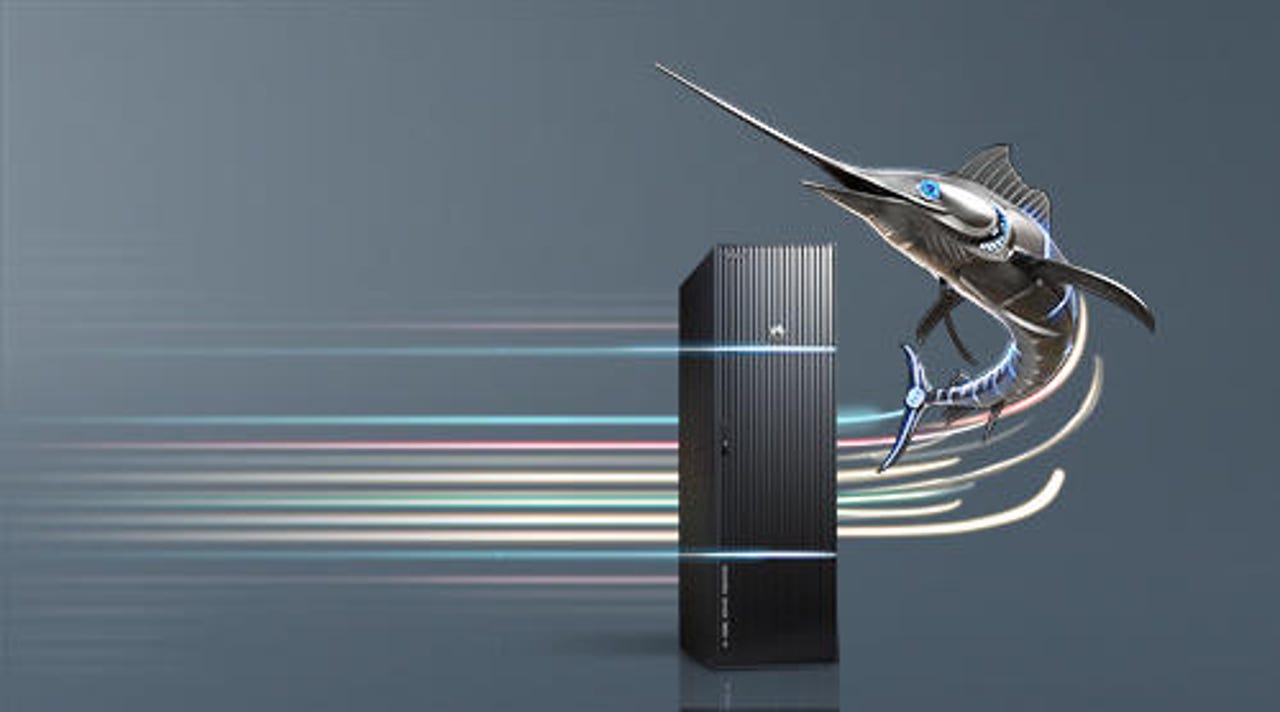Huawei OceanStor Dorado All-Flash Storage wins Interop Tokyo grand prize

Huawei's much-heralded Oceanstor Dorada All-Flash Storage solution has won top honours from industry experts at the Interop Tokyo 2020 event in June 2020 by being awarded the Best of Show award in the Server and Storage category.
This is the second time Huawei's all-flash storage has won the award. This year, what made the difference was its overwhelming performance, consistent ultra-low latency, and self-optimising I/O processing that are powered by an artificial intelligence (AI) chip.
Huawei OceanStor Dorado All-Flash Storage won its first Grand Prize at Interop Tokyo 2017. The groundbreaking storage solution was recognised by experts for leading the industry with its NVMe technologies that has the fastest performance and an optimised latency of 0.3 milliseconds.
The latest generation of the OceanStor Dorado All-Flash Storage, released in 2019, is a breakthrough in storage technology. It came after years of constant development by Huawei's R&D teams worldwide for more than 12 years.
The new series features the latest innovations for storage architecture with integrated Huawei-developed chips and AI algorithms that provide intelligent operations and maintenance throughout the lifecycle. The series sets a new benchmark for all-flash arrays in the industry and is the only storage product with a Grand Prize at the 2020 event, a reflection of the high praise it has received from Japanese experts.
"Huawei started development in 2008 and has spent over 12 years building expertise in flash technology from scratch," said Lin Yu, the chief architect of Huawei all-flash storage. "Our flash storage products have gradually moved from normal services to core applications in high-end storage for commercial use."
Early beginnings
Back in 2008, Huawei decided to prioritise flash storage to both overtake competitors and break the monopoly that traditional storage vendors had held over the hard disk drive (HDD) market. Solid state drives (SSDs) quickly surpassed HDDs with superior performance, power consumption, and reliability.
Recruiting talent and establishing a unified strategy thus became the most urgent tasks for Huawei. Many storage experts, including Lin, were tasked with setting up international R&D teams and recruiting top SSD experts to establish Huawei SSD R&D.
"By 2011, we had experience in commercial SSDs and storage arrays. Our understanding of flash media and enterprise storage products and delivery helped us customise HDD architecture for SSDs," Lin said.
"We were also able to minimise storage system latency by combining storage arrays with SSDs and leveraging key technologies, such as cache and scheduling for flash features in storage arrays."
Moving fast
This culminated in a brand new all-flash architecture designed by Huawei's storage teams –- the very first generation of OceanStor Dorado All-Flash Storage. It was first launched with Huawei-developed 6 Gbit/s SAS SSDs and was among the industry's first series of all-flash products for commercial use. The second generation was released the following year.
In 2014, Huawei's storage R&D teams set up a research project on hot and cold data identification and elimination algorithms. The project was so successful that within a year they delivered SSD cache and tiered storage features. The industry-leading solution combined SSDs and HDDs to provide the high performance and low latency of SSDs while massively reducing OPEX.
In May 2014, Huawei released its third generation of OceanStor hybrid flash storage to enter a new era of fully converged data architecture. Exactly one year later, Huawei released the OceanStor 18000, the mission-critical converged storage, which once again set a benchmark for high-end storage with its superb stability, excellent performance, and future-ready innovation.
In September 2016, the fourth generation of OceanStor Dorado All-Flash Storage, equipped with 12 Gbit/s SAS SSDs, was launched. Its excellent performance provided the necessary power for storage solutions with gateway-free active-active designs.
This marked a major architectural transformation for E2E I/O processing. The new generation allowed I/Os to be written in ROW mode, used large block sequential write, and provided consistently stable performance even when snapshot and clone features were enabled.
The key to its reliability was in the reduction in write amplification. The new generation aggregated small I/O requests in log write mode to avoid RAID write amplification.
This combined with wear leveling, patented anti-wear leveling, and innovative algorithms for disk-controller collaboration pushed the fourth generation of OceanStor Dorado All-Flash Storage, and the industry as a whole, to a new level.
SSDs go mainstream
In March 2017, Huawei released its fifth generation of OceanStor Dorado, leading the industry by releasing a full series with NVMe support. It became the industry's fastest all-flash storage with a latency of 0.3 ms and powered the HyperMetro solution with gateway-free active-active design for fast and stable core applications.
Then, in July 2019, the sixth generation of OceanStor Dorado All-Flash Storage was officially released. The hardware design, software, and operating systems were all new.
This new architecture was created to deliver ultimate reliability and handle data growth in the 5G age, being able to tolerate the failure of seven out of eight controllers and the failure of one out of two controller enclosures.
It provides the highest reliability of the industry while ensuring zero service interruptions. This newest generation of OceanStor Dorado delivers always-on core applications for enterprises and sets itself apart with its reliability.
AI is also a core feature. An AI chip is embedded into storage devices to analyse and understand the I/O rules of multiple application models and accelerate storage. Smart SSD enclosures are now able to process difficult workloads, such as data reconstruction offloaded from storage controllers.
General-purpose AI works with customised edge AI for intelligent management throughout the product lifecycle. The innovative intelligent hardware platform and intelligent algorithm for edge collaboration create a standard for intelligent storage in the industry.
These key innovations have helped Huawei leap ahead in the enterprise storage arena, culminating in this latest win in Tokyo.
The company will continue to promote inclusive flash technologies to all industries for efficient, reliable, and easy storage to accelerate the global journey into the all-flash era.